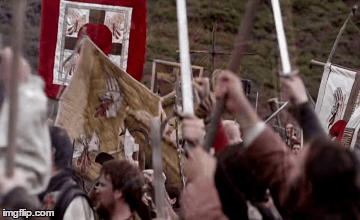The Lincolnshire Rising
The Lincolnshire Rising, the part of the Pilgrimage of Grace that took place in North Lincolnshire in 1536, is well documented. On October 13th the Rising in North Lincolnshire was over and the ringleaders were executed. The landed gentry mainly escaped the purge because the king needed them to help him rule the county of Lincoln. The Rising had not persuaded the government, and the king, to cease making the changes to society that were unacceptable to the people; changes, such as the proposal to suppress monastic institutions. Cromwell, in the name of the king, continued to demolish abbeys, priories and convents. The monastery at Sixhills, in North Lincolnshire, founded by St. Gilbert, was suppressed on September 29th, 1538. The Tudor monarchs succeeding Henry V111, Edward V1 and Elizabeth 1, continued to deprive the English Christian Church of its Catholic ethos and faith.
It is interesting to note that many members
of the North Lincolnshire aristocracy
involved in the Rising, Heneage, Tyrwhitt, and Constable, later became
associated with organised resistance to the English Protestant Reformation. The
Pilgrimage of Grace, the Lincolnshire Rising, sowed the
seeds of future Catholic resistance to the Establishment.
A badge, in the shape of a shield, showing
the five wounds of Christ’s crucifixion, was used by insurgents during the
Pilgrimage. Such a badge was formerly kept at the Catholic chapel in West Rasen, on the estate of
the Constables. It is not certain that this particular emblem had been used in
the Lincolnshire Rising; it may have
been used during the protest in Yorkshire. It has been
suggested that this particular emblem belonged to Sir Robert Constable, the
landowner of West Rasen estate. He had
taken part in the Pilgrimage and was consequently hung in chains in Hull in July 1537.




No comments:
Post a Comment